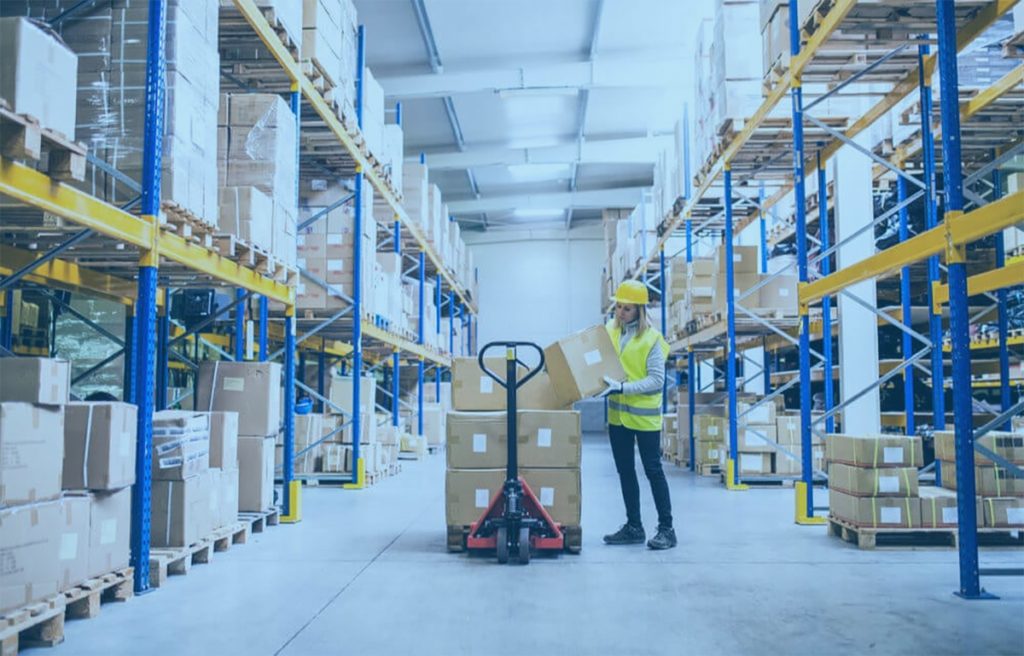How to sell on Amazon FBA in 2023
Many entrepreneurs and individual business owners have wondered this out aloud: “Is it worth selling on Amazon?”
The answer is a giant yes!
Selling on Amazon is a great way to give your brand extra exposure and enjoy an additional revenue stream.
If you’ve never heard of FBA, it is an abbreviation for Fulfilment by Amazon, which is a way to have your products stored at one of Amazon’s world-class warehouses, where they will take care of the shipping and customer service aspect.

Amazon selling made easy: Follow the Full FBA process in the UK
Once you know how to follow the full FBA process in the UK, it’s easy to start selling on Amazon:
Register your business
The first thing you want to do to start selling on Amazon is to register for VAT in the UK. However, this is only necessary if:
- You are storing goods in the UK
- You want to sell to a UK-based audience
- You believe you will exceed the £85,000 domestic VAT threshold in the upcoming 30 days or have already exceeded it in the last 12 months
Additionally, you may have to register in EU countries, but that’s only if you have an audience buying form you from locations outside the UK. Now, let’s walk you through registering your business.
Registering a company in the UK means you need to provide the following data:
- Your company name
- Your business address
- The owner of the business
One thing to note here is that you don’t necessarily have to enter your business address, especially if you don’t have a physical location – just go ahead and enter your home address as the ‘business address’, which is actually quite common for Amazon FBA sellers just starting out. An accurate and present address is required for HMRC correspondence.
Open a business bank account
Even though opening a business bank account for your Amazon business isn’t required, we’d highly recommend it, even if you are just starting out. Having a business account means you can keep your business and personal finances separate, so that you have a clear overview of your business-related income and expenses.
Creating a business account purely for your Amazon activity brings a lot of transparency and overview into the picture. Not only that, but it also relays a higher degree of professionalism to people who want to buy from you over Amazon.
Initially, go for a free bank account if you can, although you’d want to read the fine print before opening it as some banks impose specific conditions and restrictions.
Grab your VAT number
You’ll need a VAT identification number since you’ll be issuing invoices to your customers as a business subject to VAT. You’ll mention this on every invoice you issue along with your respective tax number. You need to apply for both your VAT ID and tax number at HMRC – you will find the appropriate form on their website which can be sent to them at the time of business registration.
However, some businesses are not subject to VAT – for example, when the annual turnover is under £85,000 or because the business may be selling goods exempt from VAT. With that said, we would still advise you to get your VAT ID. This is important namely for two reasons:
- It will lay a solid foundation for your business as once you exceed an annual turnover of £85,000 (the small business limit), you won’t have to worry about applying for a VAT ID.
- The process of importing products will become easier should you ever need to.
Get your EORI number
Now that we’ve successfully completed the first three steps, we need to decide what kind of product we want to sell on Amazon. Many Amazon sellers import their products from other parts of the world, which means as British sellers, they must apply for an EORI number; regardless of whether they order those products from any of the EU nations or outside the EU.
The EORI number is important because it helps customs know which goods were delivered by whom and to which company, so as to check the legal formalities of the order in question. The EORI number can be acquired for free.
However, if your supplier is in the UK and you don’t have any plans to buy from a non-UK supplier, then you can skip this step. Still, there’s no harm in applying for an EORI number, because in case you ever need to order something from outside the UK, you won’t need to make an individual delivery confirmation for every order.
Create your Amazon FBA Account for the UK
After registering your UK business, you can easily create your Amazon FBA UK account. There are two options at your disposal: Basic and Pro Seller.
If you believe you’ll be selling under 35 products each month, go with the Basic account. It’s free to set up but you do need to pay 75p (not including VAT) for every product sold on Amazon.
If you start selling over 34 products each month, the £25 a month (not including VAT) Pro Seller account would be ideal.
Amazon FBA warehouse and storage fee
Apart from the fee above, there are fees associated with storing your goods in one of Amazon’s warehouses. Amazon charges you to store these goods in their FBA fulfilment centre as they bear the responsibility of shipment, tracking, and customer service.
The amount you are charged depends on the space your goods take up in cubic feet. So, for the UK, this fee is 48p per cubic foot between January and September, and 68p between the busier October and December months.
Long term fees for inventory storage
Amazon FBA sellers need to be aware of inventory storage fees as well – fees that are applicable when you store products in Amazon’s warehouses for a period of over 12 months, due to not being sold or shipped. The current charges are £882.50 per cubic foot, which you can easily avoid, of course!
One of the best ways to ensure that your products don’t lie around for too long in Amazon’s warehouses is to order a volume that you believe will sell in a couple of months. It’s also a good idea to order a ‘test quantity’ first to see how well that sells. Based on the response from your buyers, you can order a specific volume each quarter.
Amazon FBA fees calculator
Since Amazon takes the worry off your hands in terms of storing and shipping your goods out to customers, it expects a certain share of your revenue in return – aka. Amazon FBA fee.
Use the Amazon UK FBA calculator to find out your profit per item once all the applicable fees have been paid. After you enter all the relevant data (such as packaging costs, product purchase price, shipping costs for sending the product to the warehouse, etc.), the calculator will show you the net profit per item, as well as the precise amount Amazon will deduct from each sale you make.
UK VAT filing
All UK registered businesses must file their VAT returns every quarter, although you can register yourself for monthly VAT returns too. In fact, in some cases, HMRC may ask you to register for monthly VAT returns – e.g. when your annual taxable turnover is higher than £2.3 million.
However, annual VAT returns are also possible, as long as your annual taxable turnover is under £1.35 million. Keep in mind though that you will have to make advance payments at fixed intervals throughout the year. After the annual return is filed, you may have to pay or get reimbursed; this depends on how much you paid in advance.
VAT returns are mostly payable by the seventh day of the second month after your accounting period ends. If you want to file your VAT returns for Jan-March, then you need pay by the 7th of May.
What are the Benefits of selling on FBA
There are a number of benefits of selling on FBA, some of which include:
Amazon packs and ships your orders
No worrying about where you’re going to store your items, or who’s going to pack them and ship them. Amazon’s fulfilment centres are currently among the most advanced in the world, a complete end-to-end service for picking, packing, shipping, and providing customer service for your products.
Easier to sell outside the UK
When you want to scale your business and sell beyond UK borders, Amazon has a complete range of fulfilment solutions across the EU, making storage, dispatch, shipment, and customer service a total breeze.
Cost-effective solution for ultra-fast shipping
As an Amazon seller, you only pay as you go for fulfilment services – i.e. you get charged for the storage space you need and the orders Amazon fulfils for you. This includes the cost of shipping, with no extra charges for Amazon Prime or for getting goods to your customers through One-Day Delivery.
Conclusion: Is it worth selling on Amazon FBA?
Dare we say no?
Amazon is the fastest growing online marketplace, and if you follow the full FBA process in the UK, it’s quite easy to get set up and start selling.
Chris and his team are always available to help you get started on Amazon and particularly keen on showing you tricks of the trade to sell faster, and sell more.



